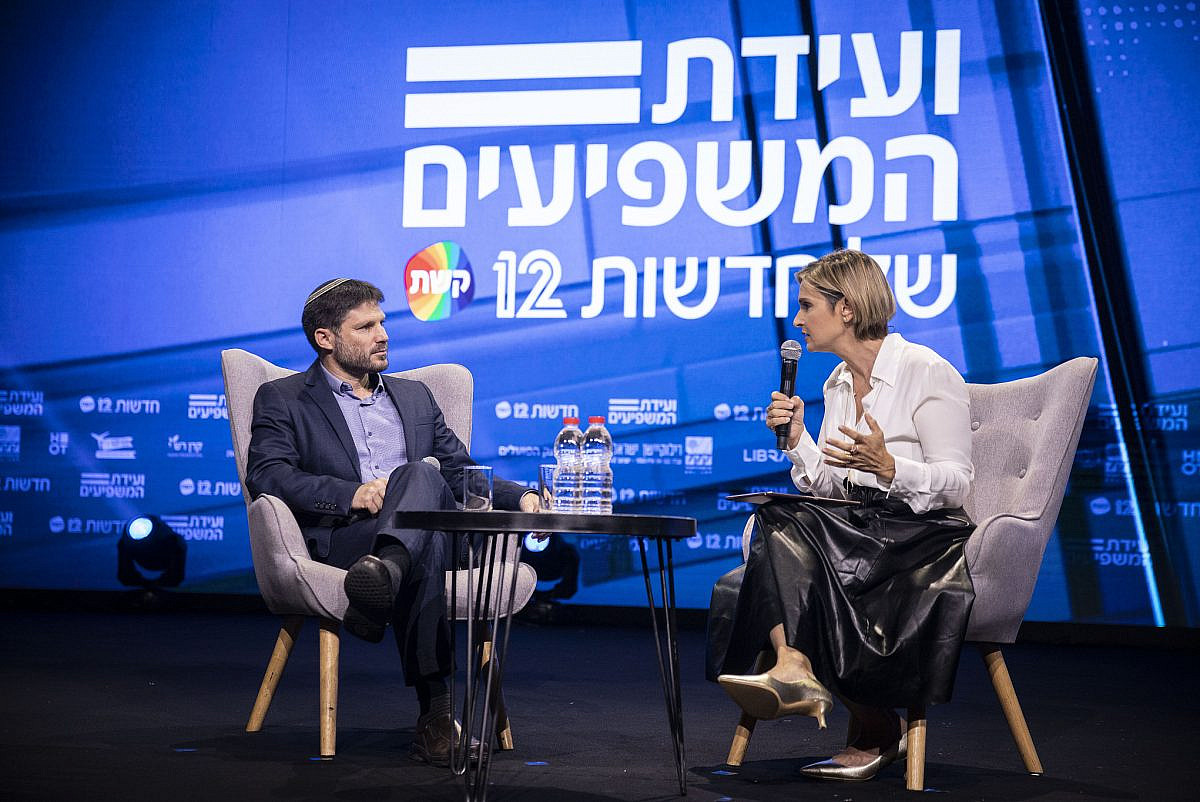For the last few months, people around the world have been closely following the ongoing brutality of the war in Gaza. Pictures of Palestinians fleeing south and looking for relatives under the rubble, videos of children searching for food and water — these and more have been circulating on social media and news networks every day since October 7.
But these images are practically nowhere to be found in the Israeli media. Most Israeli news outlets rarely even update the number of Palestinian casualties — which has surpassed 30,000 — nor do they inform their viewers that approximately 70 percent of the victims of the Israeli offensive are women and children.
The meta-narrative presented by the Israeli media defines Hamas’ attack on southern Israel as the genesis and the heart of the current geopolitical crisis. Every day there is a new angle on the events of October 7: new footage of the Hamas raids on the kibbutzim, testimonies of soldiers who participated in the battles, or interviews with survivors. Moreover, Israeli journalists cover current events in Gaza almost entirely through the single lens of October 7 and its ripple effects.
This is a conscious decision by the Israeli media. In an interview for The New Yorker, Ilana Dayan, one of Israel’s most highly-regarded journalists, explained, “We interview people about October 7 — we are stuck on October 7.” Oren Persico, a staff writer at The Seventh Eye, an independent investigative magazine focused on freedom of speech in Israel, told +972, “There is a cycle where the news outlets refrain from confronting the public with the uncomfortable truth, and as a result, the public does not ask for it.”
This cycle is understandable, to a certain extent. The October 7 attack was perhaps the greatest calamity in Israel’s history. On the deadliest day for the Jewish people since 1945, more than 1,200 Israelis were killed, and 243 were taken as hostages to Gaza, most of them civilians. For the first time in the state’s history, an enemy temporarily conquered Israeli-controlled territory. Jewish Israelis are continuing to process this national trauma and have, as a result, yet to regain their sense of security. News outlets, therefore, not only feed the public with a particular narrative but also objectively reflect the public sentiment.
Still, in the past five months, the Israeli media has done much more than merely reflect Israeli society back to itself. The media, and TV news in particular, has taken active steps to position itself as the embodiment of Israeli patriotism. It is defining what is in the public interest, drawing the boundaries of legitimate political discourse, and presenting only a certain truth to Israeli citizens. This position serves both their own commercial interests and the national interests stated by the government and the military. In so doing, TV news broadcasts are constantly walking a thin line between propaganda and journalism.
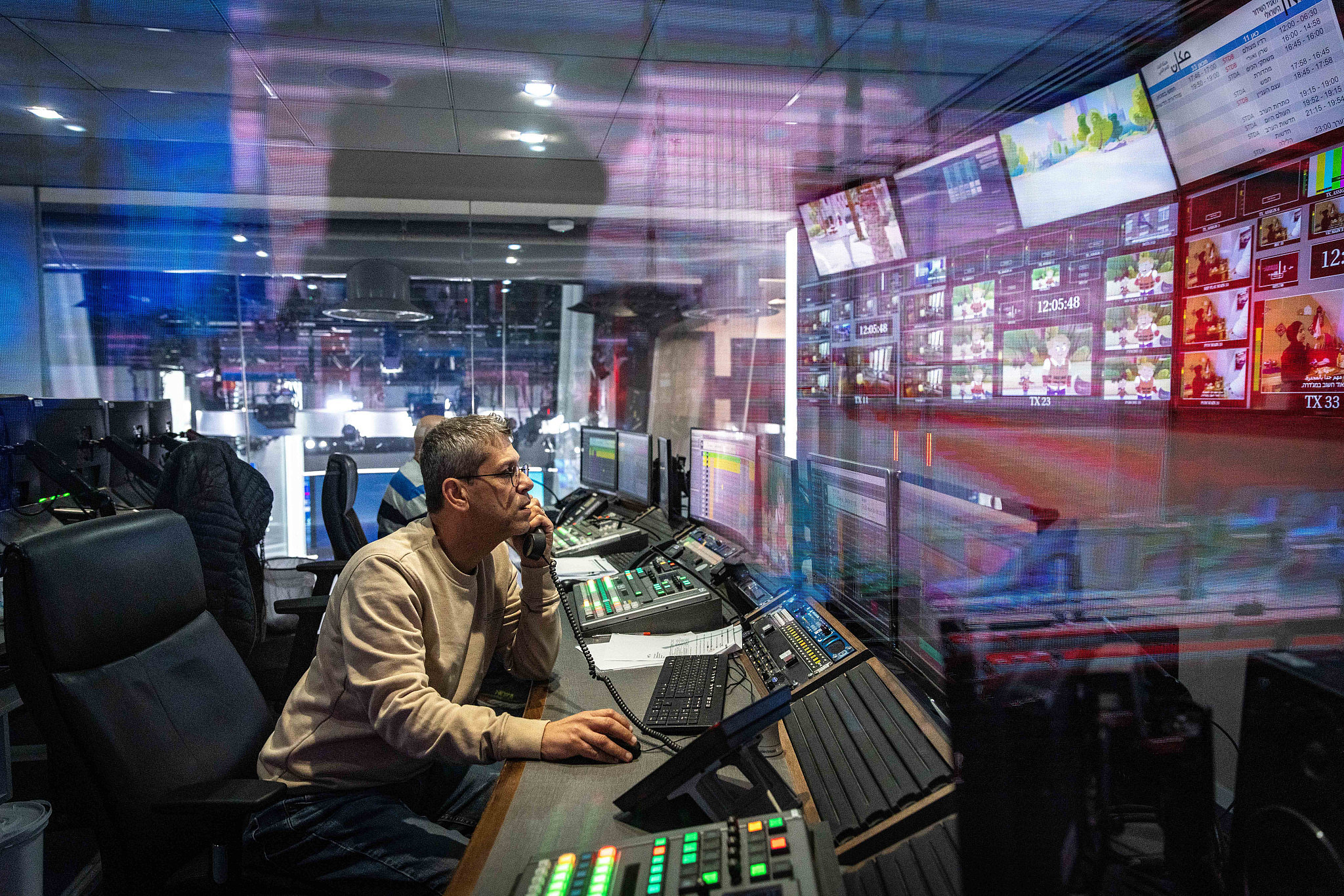
To understand why the Israeli media covers the Gaza war in this fashion, it is crucial to comprehend the historical trends in the media and its role in shifting Israeli public opinion to the right. The media became an indelible part of a cycle in which Israelis become increasingly nationalistic and militaristic, which makes them hungry for news that celebrates the war and obscures or even omits coverage of its costs. The public receives only this celebratory narrative, and the cycle continues.
To unpack this reality, the following analysis focuses primarily on TV news — which is the predominant medium through which Israelis consume news. But the same pattern is manifested in all other forms of media, making the cycle pervasive.
Transforming the media landscape
Until the 2000s, mainstream TV news was considered a stronghold of the secular liberal Zionist elite. This elite controlled the government-funded public broadcasts, which had monopoly on broadcasting until the 1990s, and then later privately owned Channel 12 and Channel 13.
All of these channels generally targeted a centrist, mainstream audience, and generally speaking, they rarely challenged the Israeli occupation, the settler movement, or the wrongdoings of security forces. They had much stronger teeth when reporting on other liberal issues like government corruption, gender equality, and in recent years LGBTQ+ rights. Similar attitudes existed in written media, with the notable exception of the left-wing newspaper Haaretz, which publishes more rigorous journalism about Palestinian issues. Yet it is worth noting that despite the high name recognition that Haaretz enjoys abroad, it has a relatively small Israeli audience — roughly 5 percent of local newspaper readers.
In the past two decades the news scene in Israel has undergone tectonic shifts. It has transformed from a largely centrist institution into a polarized field: one pole is an overtly right-wing machine, and the other is apologetically centrist, fearing to be perceived as too leftist.
Since Benjamin Netanyahu’s first term as prime minister in the late 1990s, he has been a fierce critic of mainstream media, calling it a far-left and untrustworthy source of information. (This obsession with the media underlies the corruption charges he is facing, all of which relate to his attempts to influence Israeli media to obtain flattering coverage.) After his first ouster, in the 1999 elections, Netanyahu determined that reshaping Israeli media was imperative in order for him to return to power.
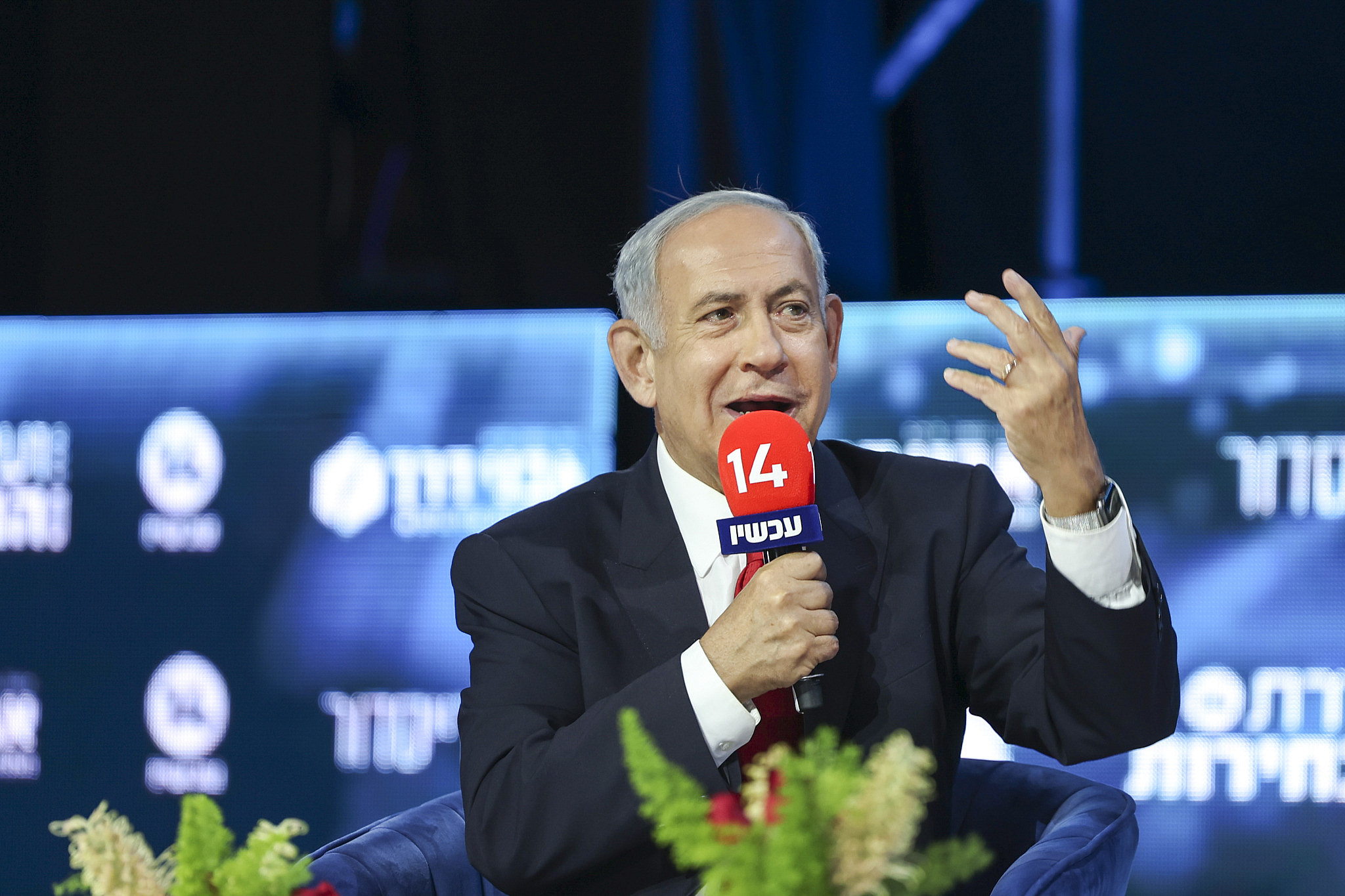
He accomplished this goal by creating an independent amplifier for himself and his views that bypassed mainstream media outlets. In 2007, Netanyahu allegedly convinced Sheldon Adelson to establish the free daily newspaper, Israel Hayom, which gradually became the most widely-read newspaper in Israel. Until Adelson’s death a few years ago and subsequent changes to its editorial staff, the paper was unfailingly sympathetic to Netanyahu.
The prime minister has also been keen to reshape the TV news ecosystem because of its consequential role in influencing public sentiment. Under the control of his Likud party, the Ministry of Communications promoted regulatory changes that allowed Channel 14 to transform itself from a “heritage channel” (licensed to broadcast programs about Judaism) to a full-blown news channel providing hours of coverage a day, making it an Israeli version of Fox News. Amid the political polarization over Netanyahu and the judicial overhaul, Channel 14’s popularity grew, especially among Netanyahu supporters, making it second only to Channel 12 in viewership.
These structural changes coincided with a change in the composition of journalists in Israel. As Israeli society has become more right wing over the past 20 years, especially on the Palestinian issue, there has also been an increasing number of journalists who are right-wing religious Zionists, many of them settlers.
Persico, of The Seventh Eye, said that these changes “create two parallel universes with parallel fundamental presumptions, divided between Bibist and just-not-Bibist.” But even on mainstream channels, he continued, “inciting statements that were once heard only in religious Zionist synagogues’ weekly pamphlets can now be heard by prominent editors and journalists.” For example, on Channel 12, only some correspondents and guests advocate for reestablishing settlements in Gaza, whereas on Channel 14, they do so more explicitly and extensively.
Embracing propaganda
After the 2014 Gaza War — in which 68 Israelis and over 2,200 Palestinians were killed — Dana Weiss, a leading correspondent for Channel 12, lamented that one of the lessons from the coverage of the war is that Israeli media should do more to highlight the voices of Palestinians in the Strip. “The inclination of Israelis to listen to the hard questions is fading away,” she warned.
But in the nationalist climate created in the aftermath of October 7, coverage of the devastation Israel is unleashing in Gaza is nowhere to be found. Some journalists even cast doubt on whether the media should publish stories that might damage national morale.

From the very beginning of the war, TV news channels have spearheaded the hasbara effort in Israel. Hasbara — which means “explaining” in Hebrew — is used to describe pro-Israel advocacy, but is essentially doublespeak for propaganda. Elements of hasbara appear in every TV news channel. For example, since October 7, each channel’s logo has been modified to now include the Israeli flag and the government slogan “Yachad Nenatzeach” (“Together we shall win”).
As part of this hasbara, all mainstream news networks portray Israel as the ultimate victim, and the Hamas attacks as having demonstrated unparalleled brutality. This victimhood is an exclusive status: it leaves little to no room for the suffering of Palestinians in Gaza, nor the level of the humanitarian crisis they are facing. Israeli mainstream TV news rarely shows any documentation of the rubble in Gaza or the magnitude of displacement and destruction there. When it does, the responsibility for these losses is laid at Hamas’ feet.
Anyone who challenges this narrative is targeted. For example, when UN Secretary-General António Guterres explicitly condemned Hamas’ October 7 attack but said that it “did not happen in a vacuum” — referring to Israel’s 56-year-long occupation as crucial context — the Israeli media pounced.
Instead of providing an honest explanation of his internationally mainstream position, Israeli journalists competed with one another to most harshly criticize Guterres. Almog Boker, one of the most popular correspondents on Channel 13, claimed that the UN chief was “justifying Hamas’ atrocities.” A headline in Ynet read, “Why Does the UN Secretary-General António Guterres Dislike Israel So Much?” Even Channel 12 described his statements as “outrageous.”
The army is the source
The close interaction between the Israeli media and the military, unsurprisingly, creates several critical blind spots in covering the reality in Gaza. The presence of international media was practically non-existent for the first weeks of the war, and most international journalists left Gaza for their own safety. The Israeli bombardment, and the intermittent electricity and communications blackouts, have hindered the ability of local Palestinian journalists to report.
As the ground invasion progressed, the Israeli army allowed some journalists — both Israeli and international — to enter Gaza, but only if they were accompanied by the military. Such tours are usually directed by the IDF Spokesperson’s Unit, meaning the journalists are unable to interview Palestinians directly or to independently access ruined sites. They can see merely what is presented to them.
The military’s influence goes far beyond controlling access to information. For the first three months of the war, the head of the IDF Spokesperson’s Unit, Daniel Hagari, conducted daily press conferences that were broadcast live on every channel during primetime. These press conferences included updates on the state of the war, but only sporadically contained instructions for the public or genuinely newsworthy information. Although Hagari was broadly viewed by the Israeli public as a reliable source of information, especially relative to the lack of public trust in the government, his unnecessary but constant presence gave the army control over the narrative in the news.
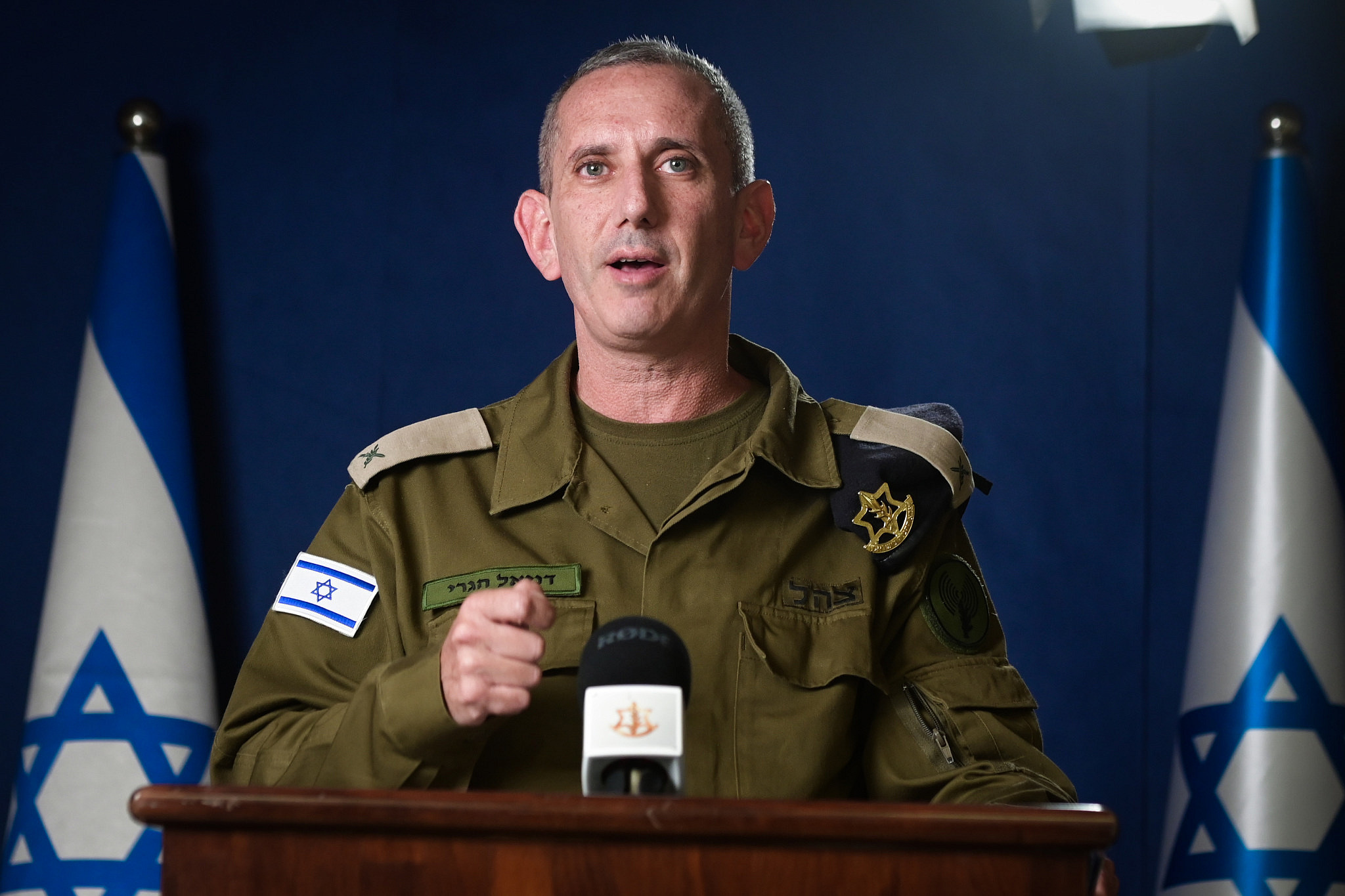
Furthermore, military correspondents, who largely rely on the Israeli army as their main source, are constantly praising the military. This is not a new trend. Even before the war, military correspondents often published IDF statements verbatim, and without mentioning that the military was the sole source of information. They also fiercely amplify the supposed successes Israeli forces have made in Gaza and advocate for continuing the operation.
The same is true of many other journalists and the media establishment as a whole. This is in part a byproduct of receiving their journalistic education through the Israeli military itself. The standard training for many journalists in Israel is at Galatz, the Israeli army radio, not at universities or local newspapers. Indeed, Galatz selects dozens of newly-conscripted Israeli soldiers to work at the station as part of their mandatory service. These soldiers receive unparalleled and highly-valued training and experience, which makes them particularly appealing for later occupational recruitment when they finish their service.
Persico emphasized the importance of this background, arguing that “generations of Israeli journalists were raised [professionally] under this military supervision, which trained them to think that there are things they cannot publish.” As a result, this education has over time shattered the fundamental conception of journalistic independence in Israel.
Pushing false narratives, dehumanizing Palestinians
In addition to omitting crucial coverage of Palestinian lives, Israeli media also plays an active role in creating outright false perceptions of the war and Palestinian public opinion.
A major difference between international and Israeli coverage of the war, for example, is the issue of Hamas’ legitimacy among Palestinians, which has become a recurring fixation of the mainstream media in Israel. There is certainly criticism of Hamas among Gazans for failing to guarantee security or to provide humanitarian assistance during the war. But the Israeli media portrays Hamas as on the cusp of losing all its standing among Palestinians.
On Channel 12, Ohad Hemo and Ehud Yaari, the leading Arab and Palestinian affairs correspondents in Israel, reported that tensions between Gazan civilians and Hamas are intensifying. According to them, Gazans have said that “instead of ‘hello,’ the most common phrase on the street between people is ‘may God take revenge against Hamas.”
A few weeks ago, Israeli TV channels circulated a clip of thousands of Palestinians fleeing Khan Younis through a humanitarian corridor chanting, “The people want to take down Hamas.” None of them mentioned, as revealed by +972, that they were forced to do so by Israeli soldiers in order to be let through. Even if the media was unaware of this, any decent journalist should have questioned the chanting’s significance as an indicator of Hamas’ legitimacy, especially given that the videos were taken by soldiers and that the Palestinians were at the mercy of the Israeli military.
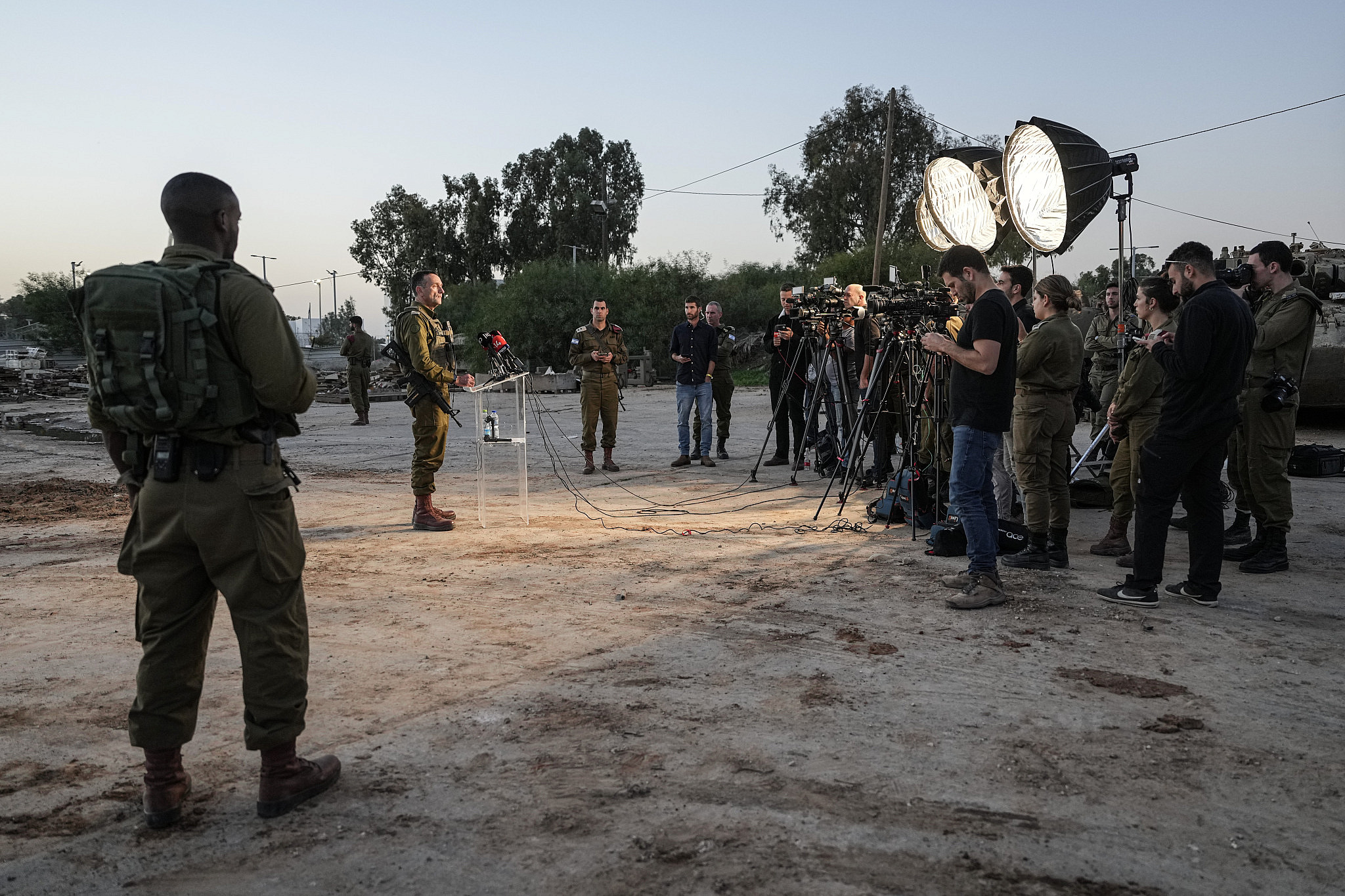
The narrative of Hamas’ supposedly imminent collapse was reinforced by other footage, such as videos of Palestinians in northern Gaza surrendering their weapons to Israel. Initially, news channels quickly amplified that “hundreds of Hamas militants are surrendering in northern Gaza.” A few days later, however, national security officials estimated that out of those hundreds, only 10 to 15 percent were actually Hamas militants. The rest were ordinary civilians who had not fled south, as the army had ordered them to.
Another example is the notion that the Israeli military is closing in on Yahya Sinwar, the head of Hamas’ Gaza branch and one of the masterminds behind the October 7 attack. These types of pieces have been running for months now. In December, in a video that sparked much mockery, Adva Dadon, a journalist with Channel 12, aired a story titled “In the house of Sinwar,” documenting an Israeli raid on what was said to be one of his homes. She even lifted a pair of shoes from the rubble and claimed it belonged to Sinwar — a statement that was quickly debunked.
Most disturbingly, Israeli TV news takes an active role in dehumanizing Palestinians. Channel 14 has consistently promoted abominable views — such as calling for the annihilation of Gaza, and describing all Gazans as terrorists and legitimate targets — which are parroted by leading anchors and correspondents. Because of these recurring statements, Channel 14 was even cited several times in South Africa’s complaint to the International Court of Justice that accuses Israel of committing genocide in Gaza. These types of statements are not the exception, and in fact appeared on mainstream TV news as well.
Moreover, mainstream news refuses to report the number of Palestinian casualties, claiming that the numbers of the “Hamas-run” Health Ministry cannot be trusted — even though they were historically accurate and the Israeli army itself relies on them. Channel 14 used the numbers released by the Health Ministry, but defined all the thousands of Palestinians killed as “terrorists.”
Government talking points
To some extent, the undercurrents we see in Israeli media coverage of the war also appear on social media — a central method of news consumption, especially among the younger population. On social media, algorithms are designed to create an echo chamber with a parallel universe, and its personalized nature exacerbates the isolation of Israelis both from each other and from the rest of the world. For instance, even when Israelis on social media are exposed to non-Israeli coverage of the war, it would likely be through pro-Israeli mediating agents explaining it is merely enemy propaganda.
Israeli mainstream media creates another echo chamber for Israelis that amplifies government talking points and bears little resemblance to the information landscape of the rest of the world. Unlike Israeli news, international media is currently much more focused on the magnitude of the devastation in Gaza and its connection to the long-term oppression of the Palestinians. At the same time, there is much doubt globally if Israel’s war objectives are even feasible — but this doubt is hardly aired in Israel.
Most read on +972
Thus, while Israeli TV channels have not been forced to boost the government’s line of thought, doing so has certainly served their own interests in maintaining high ratings. This strategy worked: a Hebrew University poll found that since the beginning of the war, mainstream media news consumption has more than doubled, and exposure to all major news networks has increased. Among the Jewish population, the popularity of Channel 12 has skyrocketed, especially among viewers affiliated with the anti-Netanyahu bloc.
These shifts are not a deviation from the norm. They are the apex of historical transformations that have fundamentally changed Israeli media and TV news, combined with outlets’ ad-hoc decision to display and prove their patriotism. Unfortunately, if coverage of the Gaza war is any indication, these trends are likely to continue, aggravating the ever-propelled cycle that pushes the Israeli media and the Israeli public to be more right-wing, conformist, militaristic, and nationalistic.

